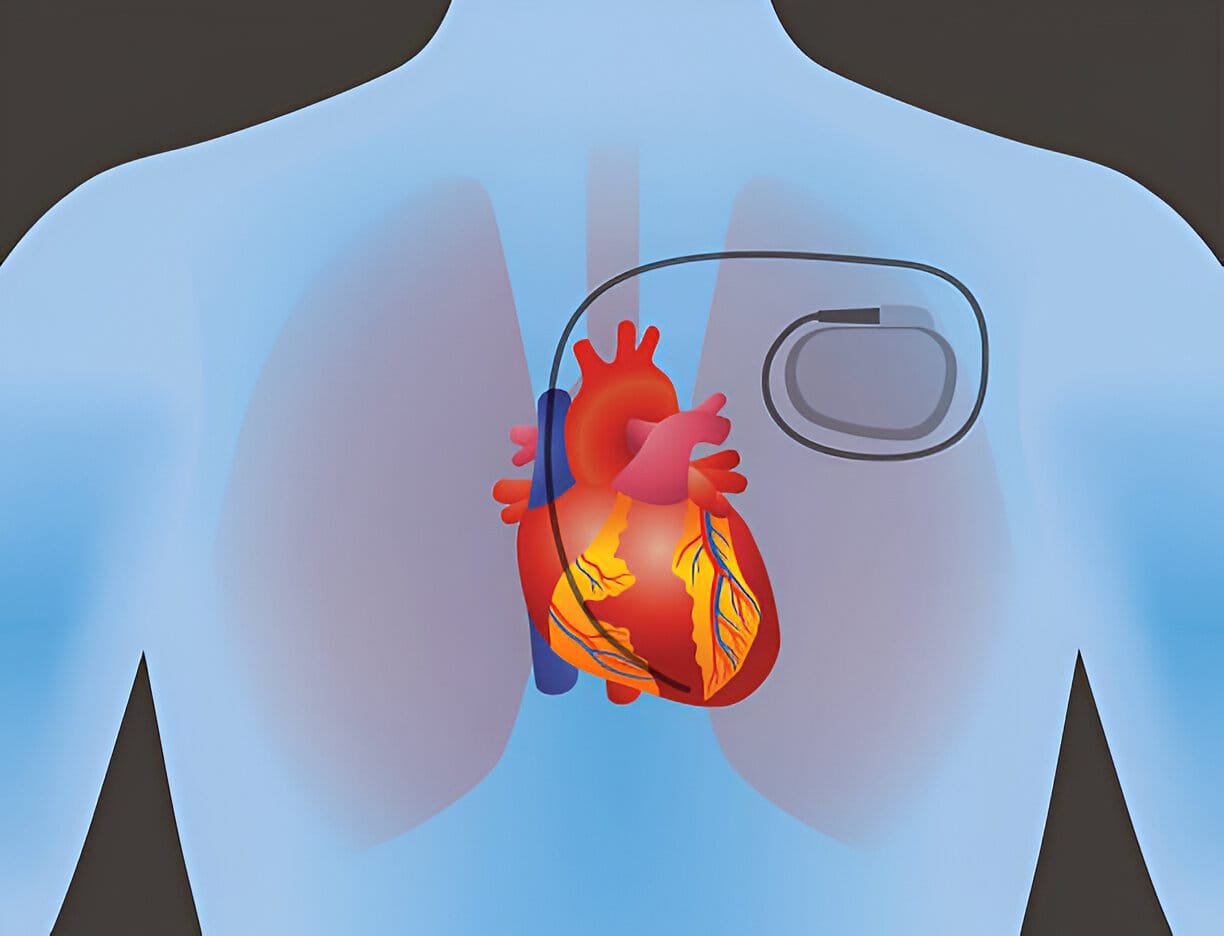With a failure of the heart’s rhythm, many awful debilitating symptoms are provoked. Ranging from dizziness and fatigue to even potentially deadly complications, a heart rhythm is extremely important. This healthy rhythm of our heart is maintained through a life-saving solution that comes in the form of a pacemaker, which restores normalcy and allows the heart to maintain a steady rhythm. Not only does it improve the quality of life, but also the peace of mind of patients who live with heart rhythm disorders.
The article covers pacemaker implantation surgery, its benefits, and what a patient can expect during recovery.
What are Pacemakers?
Pacemakers are small, battery-operated medical devices implanted under the skin on the chest or abdomen. A pacemaker generates electrical impulses to control the heart’s muscles, and this helps it beat at normal rates and rhythms. Heart conditions that necessitate a pacemaker include bradycardia, which is a slow heart rate, heart block, and atrial fibrillation. All these conditions cause an impairment of the pumping ability of the heart.
A pacemaker works by monitoring the electrical signals of the heart. If the heart’s rhythm slows or becomes irregular, the pacemaker sends tiny electrical signals to stimulate the heart muscles. This constant monitoring and timely intervention ensure the heart continues to function efficiently.
Pacemakers are marvels of medical technology. The design of these devices has improved significantly over the years. It has become more efficient and less intrusive.
Types of Pacemakers
Each of the various types of pacemakers cater to specific medical needs:
- Temporary Pacemaker: Used in emergencies or short-term situations like after a heart attack or surgery. These are external devices connected to the heart through wires.
- Permanent Pacemaker: It is the most common type and is meant for long-term use. It is implanted under the skin surgically.
- Single-Chamber Pacemaker: It controls the electrical impulses in one chamber of the heart, either the atrium or ventricle.
- Dual-Chamber Pacemaker: It coordinates the timing between the upper and lower chambers of the heart, which results in a more natural heartbeat.
- Biventricular Pacemaker: This kind of pacemaker is used in heart failure patients, where it ensures that both ventricles pump in sync, thereby improving the efficiency of the heart.
- Epicardial Pacemaker: Involves an implantation outside the heart wall. These pacemakers are mainly applied to pediatric patients and complicated cases.
- External Pacemaker: Non-invasive pacemakers are used as a device external to the patient’s body and are mainly for temporary applications. Thus, understanding internal vs. external pacemakers will help determine how the latter serves as an urgent measure, whereas internal ones serve a longer-term purpose.
Why Pacemaker Implantation is Needed?
The decision to implant a pacemaker is made due to the correction of irregular heart rhythms that could lead to serious complications such as fainting, heart failure, or sudden cardiac arrest.
Some of the main scenarios include:
Permanent Pacemaker Implantation: In cases of chronic arrhythmias or heart blocks in which the heart cannot maintain a stable rhythm on its own.
A Pacemaker: This has been shown to improve quality of life by alleviating symptoms like fatigue, dizziness, and breathlessness. It serves an important preventive role in the prevention of all life-threatening cardiac events.
Pacemakers are considered for patients who are having symptoms ranging from syncope, severe exhaustion or chest pain. Restoring normalcy over daily routines usually proves life-changing.
How Does a Pacemaker Work?
The pacemaker implantation procedure is quite straightforward. Here’s what to expect from the process:
- Pre-Operation: Pre-operative evaluation involves a series of tests, such as blood tests, imaging, and a review of medications. Local anaesthesia, and sometimes a sedative, is given.
- Incision and Placement: A small incision is made near the collarbone. The pacemaker’s leads are then guided through a vein into the heart’s chambers. Once in place, the leads are connected to the pacemaker device, which is placed under the skin.
- Device Testing: Before the incision is closed, the pacemaker is tested to ensure it functions correctly and responds appropriately to irregular heart rhythms.
- Duration: The surgery takes about 1-2 hours, and most patients are discharged within 24 hours.
The procedure has become minimally invasive with modern advancements, reducing recovery time and complications.
Results
Following are the results of pacemaker:
- Improves Heart Function: The patient is able to experience improvement in heart function and relief from symptoms such as fatigue, breathlessness, and dizziness. The pacemaker restores confidence in performing everyday activities because the fear of sudden fainting episodes or cardiac arrests is reduced.
- Regular Follow-ups: They are essential for monitoring the performance of the pacemaker and its adjustment when necessary. The device’s battery usually lasts for 5-15 years, depending on usage, and a replacement procedure is scheduled when the time is due.
Precautions after Surgery
After the pacemaker implantation, it is very important to take certain lifestyle changes to ensure the proper working of the device:
- Diet: It should be a low-sodium and low-saturated fat diet so that the rest of the overall cardiovascular health does not get ruined. Complications can be minimised.
- Pacemaker After Surgery Care: Should avoid strenuous activities, lift heavy objects or put pressure on the incision site for the first few weeks, and keep the site clean and dry to avoid infection.
- Things You Can’t Do with a Pacemaker: Avoid intense magnetic fields, high-voltage electrical appliances, and certain medical procedures, including MRI, unless using an MRI-compatible pacemaker.
- Restrictions Post-Pacemaker Surgery: Refrain from direct chest trauma and communicate with health professionals about the pacemaker prior to any form of treatment.
- Use of Electronics: Cell phones and electronic devices may interfere with its function.
These precautions ensure that the recovery is smooth and the pacemaker works at its best.
Complications of the Procedure
Pacemaker implantation is generally safe, but like any medical procedure, it has risks:
- Long-term effects of a pacemaker: These include lead displacement, battery failure, or device malfunction. Routine check-ups can help address these issues promptly.
- The pacemaker of the heart side effects: Some patients may experience infection, swelling, or bruising at the implant site. Rarely, there could be bleeding or damage to blood vessels.
- The pacemaker of heart price-related concerns: Patients often worry about the costs, which we’ll address shortly.
Understanding these risks and discussing them with a healthcare provider can help alleviate concerns and prepare patients for the procedure.
Pacemaker Price in India
India is becoming an epicentre in affordable and qualitative medical treatments for pacemaker insertion.
- Pacemaker Cost: Temporary pacemakers range between INR 50,000 to 1,00,000. Permanent pacemaker: it is usually between INR 1,50,000 – 3,00,000, depending upon the type and hospital. Surgeries for the installation of pacemakers involve the following expenses: expenses for the device, operating costs, hospital stays, and visits. The influencing factors are
- Type of Pacing: The type of pacemaker is biventricular pacers, and advanced models end up being higher priced.
- Hospital and Surgeon Fees: Top-tier facilities and specialist doctors will be expensive.
- Follow-up Care and Device Maintenance: These include follow-ups, device testing, and the eventual replacement of the battery.
India offers an ideal combination of quality medical practitioners and low cost for international patients requiring pacemaker implantation.
Living with a Pacemaker
Life with a pacemaker is not a big adjustment but opens the door to a more active and fulfilling lifestyle.
- Healthy Habits: Regular monitoring, maintaining a healthy diet, and staying informed about pacemaker technology advancements lead to an efficient and active life.
- Support Networks: Support groups or communities encourage patients to share their experiences while keeping them updated on best practices for living with a pacemaker. These relations provide them with emotional support and practical solutions.
This is a life-changing procedure, sometimes termed the ‘hope of life’, but it really offers a significant quality of life to patients with heart rhythm disorders. The knowledge of types of pacemakers, the need for implantation, and associated costs will help the patient and his family make informed decisions.
This life-saving procedure is accessible and affordable in India, reinstating it as the global leader in medical tourism. If you or your loved ones are planning for a pacemaker, seek the help of an expert cardiologist and have a future that is full of health and energy. With proper care and technology, the heart’s rhythm can be restored in the most beautiful way so that life’s melodies play uninterrupted.
Atrius Cardiac Care for Heart Health
If you’re experiencing irregular heartbeat or related issues or want expert guidance, schedule an appointment with Atrius Cardiac Care today. Our specialists are here to help you take control of your heart health and improve your quality of life. Visit our website or call us to learn more!

